Fall Walleye Fishing on Lake Huron's Saginaw Bay
Growing up in the Great Lakes Bay Region, fall was a time of year when all sights were trained on the migrating flights of waterfowl. The open waters of Saginaw Bay still offer outstanding waterfowl hunting opportunities, but a different kind of migration attracts outdoor enthusiasts these days.
Anglers from across the Midwest travel to the Great Lakes Bay Region in search of another transient species, the always popular walleye.
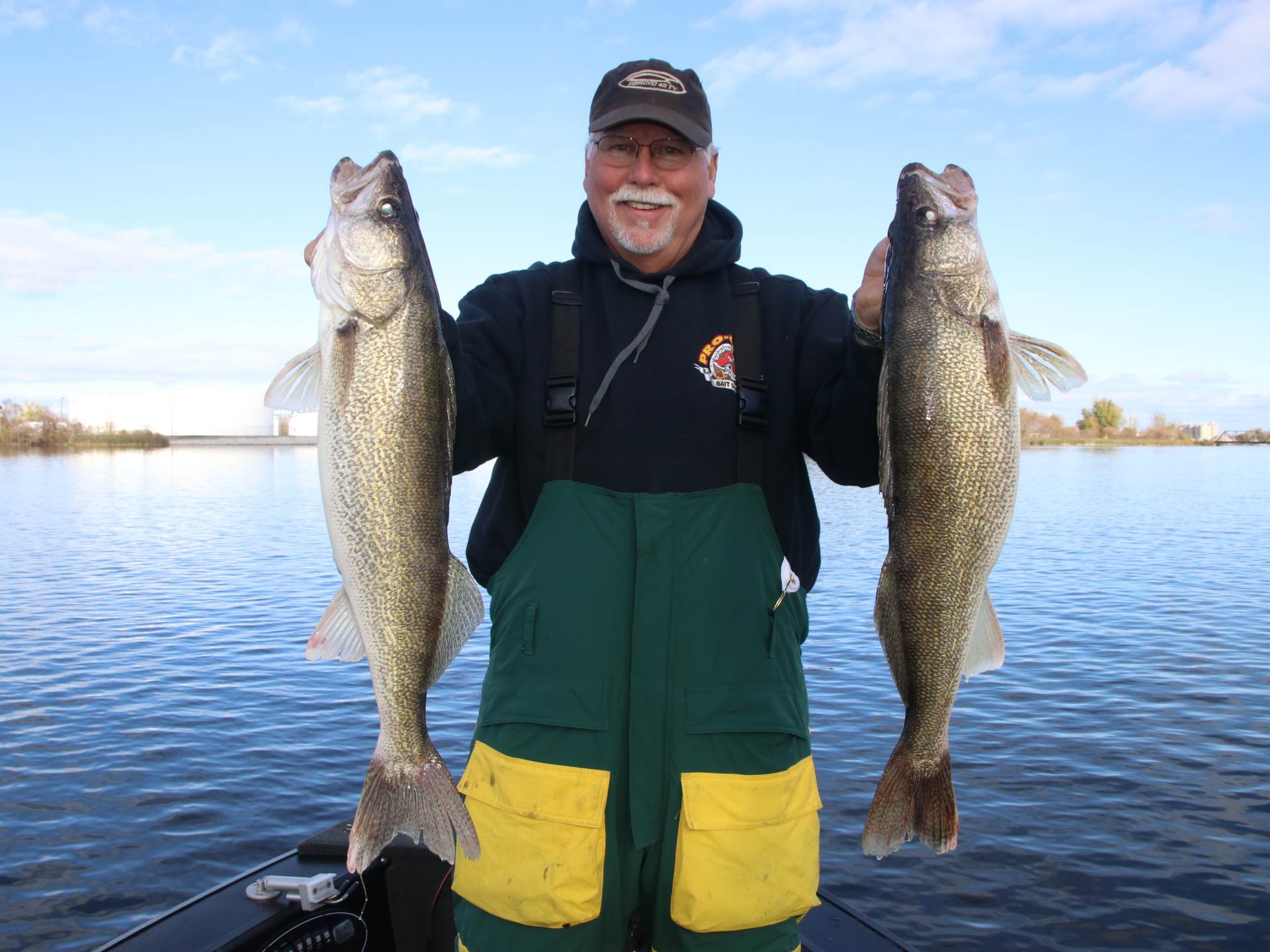
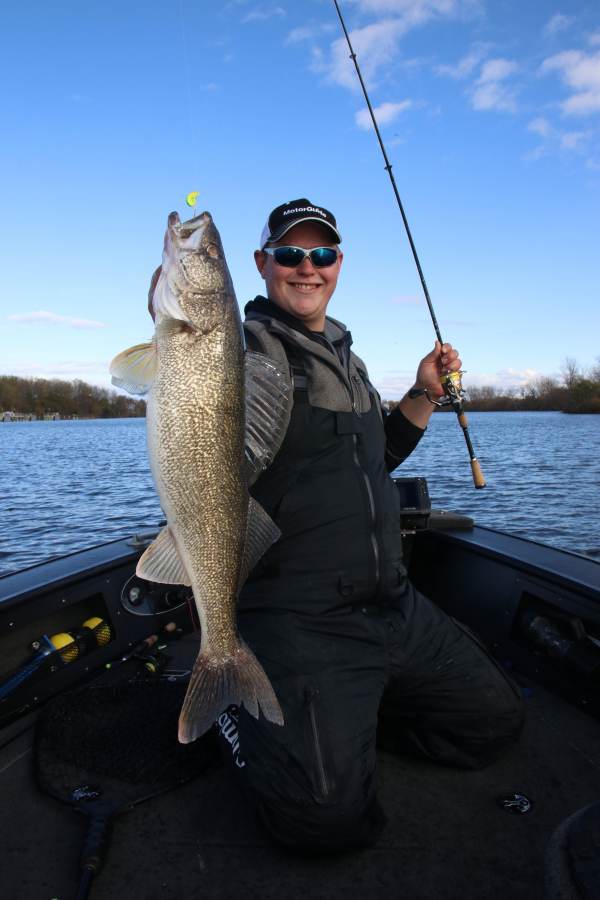
On the Move
Walleye are a species that always seem to be on the move. In the Great Lakes Bay Region walleye migrate many miles up tributary rivers where they spawn in early spring. Immediately following the spawn, these fish migrate back to Saginaw Bay. Many fish spend the summer foraging on emerald shiners which are abundant in Saginaw Bay, but a significant percentage of the population pushes north to the outer reaches of Saginaw Bay, Lake Huron and beyond.
The walleye that travel the furthest tend to be the larger members of the population. These adult fish are constantly on the move in search of preferred forages such as smelt, goby, alewife and gizzard shad. In October, November and December these fish find the forage they covet in the Saginaw River and also the nearshore waters of Saginaw Bay.
The Saginaw River Bite
In October when Saginaw Bay walleye start showing up in the lower Saginaw River, locals say the "run is on". A little-known fall river bite takes place in the Saginaw River which loads up with both gizzard shad and walleye in October and early November.
Changing water temperature triggers this annual migration of fish. As the open waters of Saginaw Bay and Lake Huron begin to get cooler, gizzard shad head to the Saginaw River where they find warmer and more plankton-rich water later into the year.
Vertical jigging dominates the fall river bite. The most successful anglers arm themselves with 1/4 to 3/8 ounce jigs tipped with soft plastic grubs. The most popular grub bodies include the Berkley Ripple Shad, Z-Man Scented PaddlerZ and Lunker City Fin-S Fish grubs including the three-, four- and even five-inch versions.
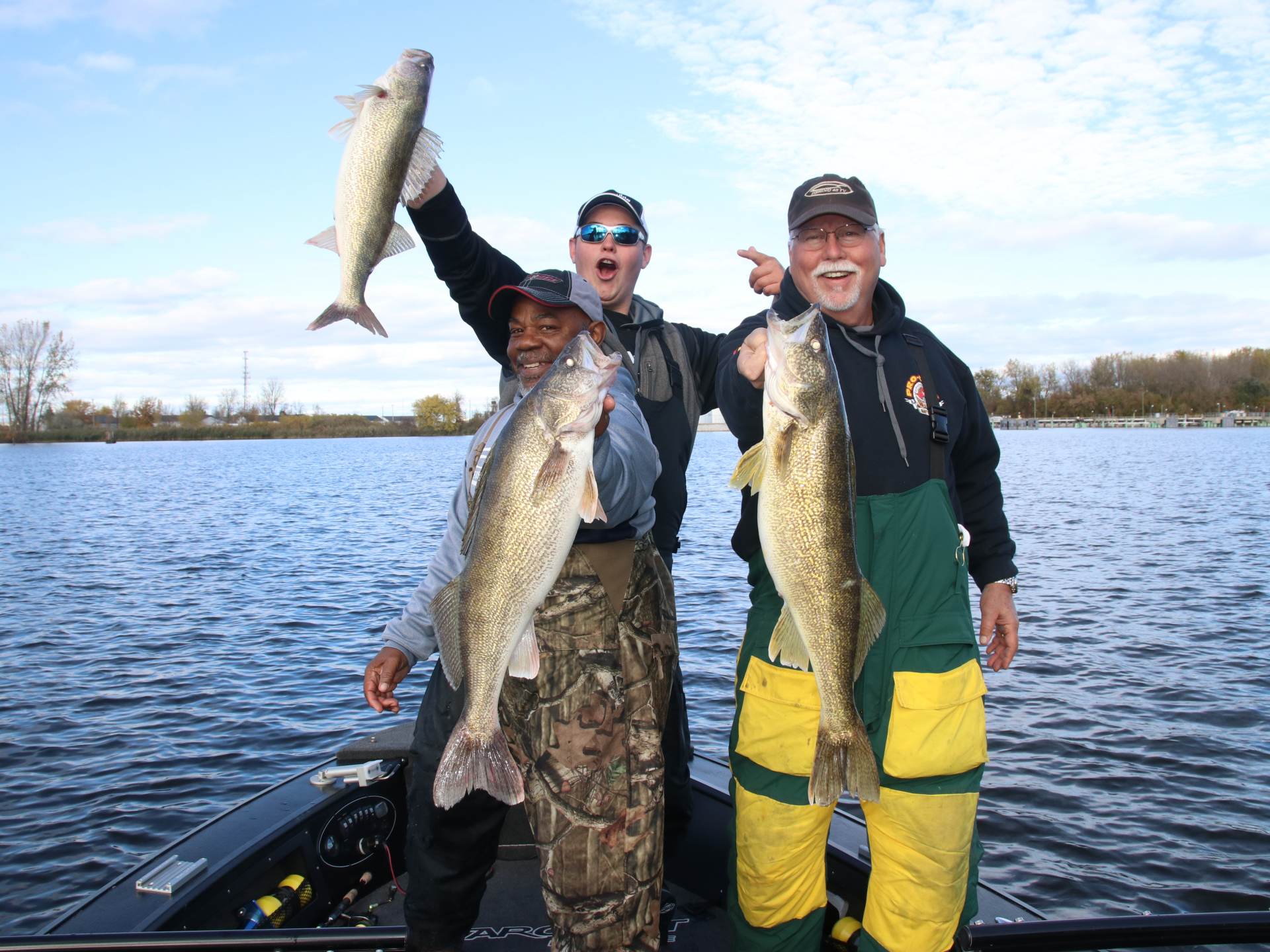
Fall Walleye Fishing
The Saginaw Bay Bite
Part of what attracts anglers to Saginaw Bay in fall is a larger grade of fish. In Saginaw Bay it's abundantly obvious that the walleye taken in the fall are longer and heavier on average than those taken in the summer months. Crankbait trolling dominates the Saginaw Bay fishing scene in the fall.
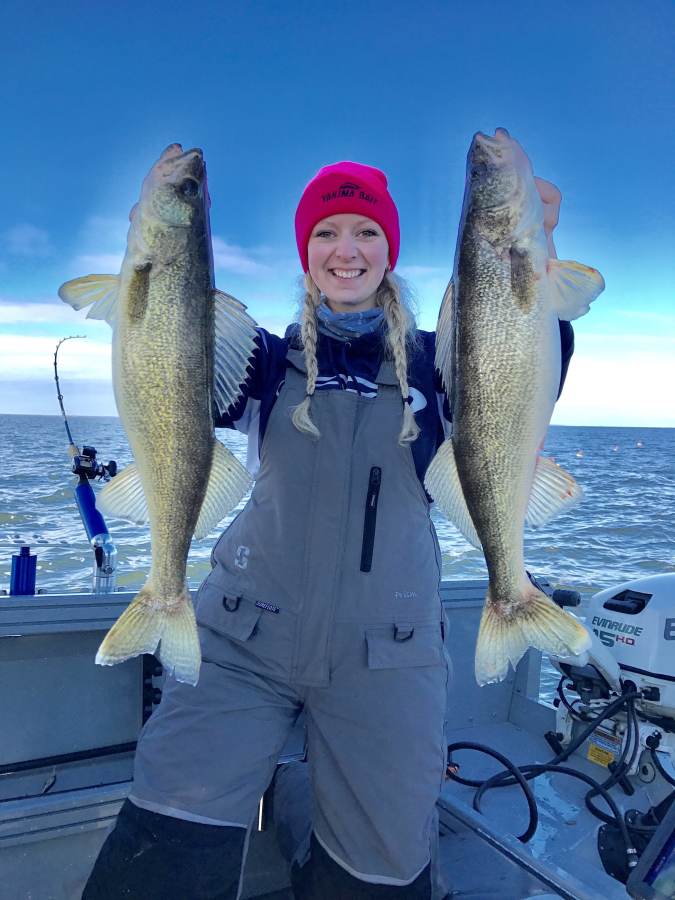
All Cranks Are Not Created Equal
The fact that Saginaw Bay yields an outstanding crankbait bite in the fall is not exactly news. What many anglers might find interesting is the crankbaits that routinely produce the best catches can be counted easily on the fingers of one hand. A select category of crankbaits known as "minnow divers" produce the vast majority of the walleye taken in October, November and December.
Crankbaits in the "minnow diver" category feature long slender bodies with a diving lip that is roughly twice as long as it is wide. This group of crankbaits feature a fairly significant dive profile and a more subtle top-to-bottom roll.
The "A" list of Saginaw Bay crankbaits includes the Rapala Deep Husky Jerk No. 12, the Bandit Walleye 5/8 ounce, the Berkley No. 9 Flicker Minnow and the Reef Runner 800 series. Other crankbaits that deserve an honorable mention include the Smithwick Perfect 10, the Rapala Husky Jerk 14 and the Yo-Zuri Deep Crystal Minnow.
The diving depths of all of these crankbaits and many more are published in a handy phone app known as Precision Trolling Data. Available for both Android and iPhone devices, this app provides invaluable data aimed at helping serious walleye trollers predict with certainty the depth their lures are running.
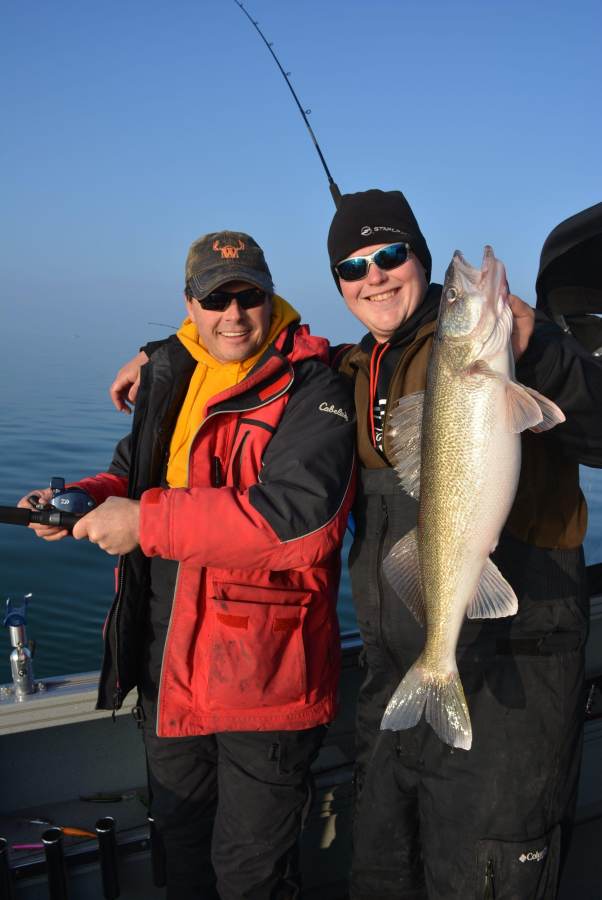
Planer Board Basics
Any crankbait worth trolling is also worth using in combination with an in-line planer board. Overwhelmingly the most popular in-line board on the market is the Off Shore Tackle Side-Planer, manufactured right on the shores of Saginaw Bay.
To get the most from these in-line boards, the Off Shore Tackle factory rigs them with a line release on the tow arm of the board (orange OR19) and a line clip (red OR16) on the back of the board.
Rigged in this fashion when a fish is hooked, the line can be tripped free from the tow arm release. Meanwhile, the board remains pegged to the line thanks to the red line clip at the back of the board. The red OR16 clip features a small plastic peg between the rubber pads. When the fishing line is placed behind this peg, the board is essentially pinned in place on the fishing line, allowing the angler to reel in the fish and the tripped planer board at the same time.
This unique rigging method allows the angler to trip the board when a fish is hooked, preventing the board from planing out to the side and making it easier to fight hooked fish. The tripped board simply drops back in the trolling pattern, allowing the angler to fight a hooked fish without having to clear any other planer board lines.
Rigging in-line planer boards in this fashion makes it possible to fish two, three, four or even five planer boards per side of the boat! The great state of Michigan allows anglers to troll using up to three lines per angler, making it possible to literally saturate the water column with crankbaits.
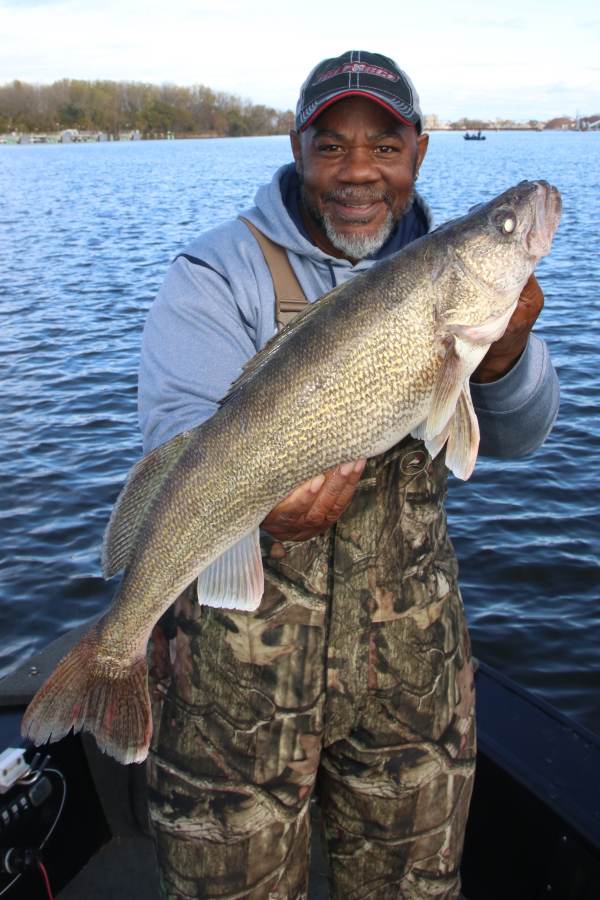
Establish A Scent Stream
One of the other little known tricks associated with targeting walleye involves using fish attractants. Unfortunately, most fishing scents are manufactured with cover scents such as oil of anise or garlic that are designed to cover unnatural odors.
Pro Cure, a scent company from Salem, Oregon produces a complete line of Super Gel scents that are made by grinding up popular walleye forage species including alewife, gizzard shad, emerald shiners, smelt and even round goby into an oily and sticky paste. This paste is sold in two- and eight-ounce bottles. Super Gel adheres well to crankbaits and also soft plastic baits creating a natural and long-lasting scent stream in the water.
Creating a natural scent stream in the water does an excellent job of stimulating walleye into striking at lures they might have otherwise not given a second look at.
Wrapping it Up
The Great Lakes Bay Region hosts some of the state's most noteworthy walleye fishing opportunities in October, November and December. Great fishing opportunities can be found both on the Saginaw River and also on the open waters of Saginaw Bay.
For those who enjoy jig fishing, the lower Saginaw River is the place to be. For anglers who crave trolling, the open waters of Saginaw Bay produce limit catches day in and day out. Planning a fall fishing trip to the Great Lakes Bay Region is a no brainer. Jig or troll, the results are going to be the same.
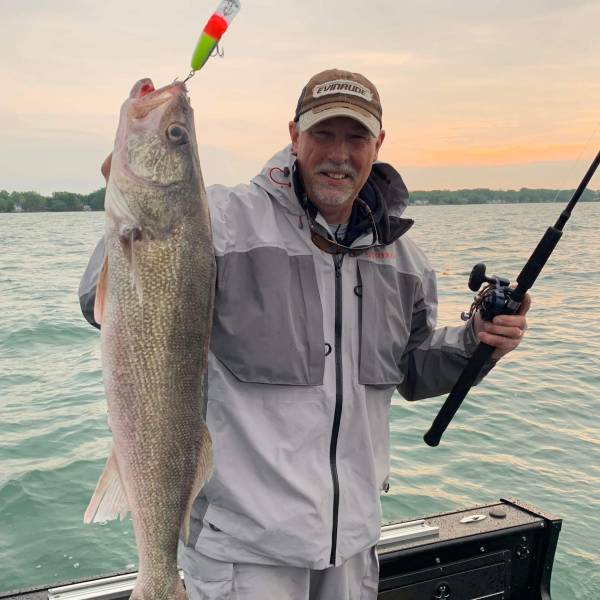
Author
Mark Romanack
Mark Romanack is a veteran outdoor writer and host of the Fishing 411 TV series that broadcasts on Sportsman Channel and World Fishing Network. Romanack and his TV production team visit the Great Lakes Bay Region often while filming television episodes. Find more from Mark at: fishing411.net.


